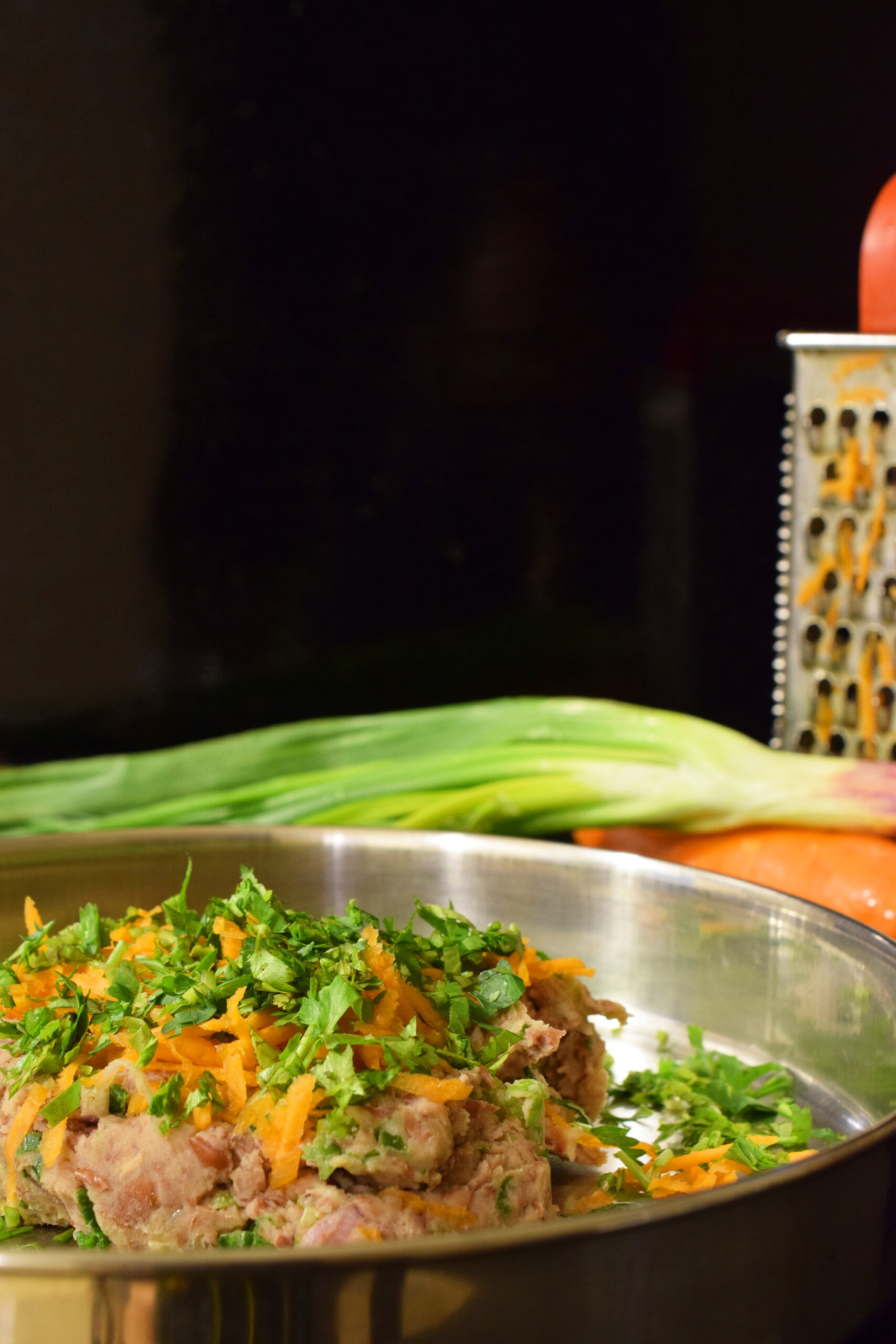When most people hear the word “burger”, they think of an oily, low-nutrition meal full of sauces and heavy meat, polished off with unhealthy sodas and greasy fries! But what if I told you that I can share with you how I make something that looks like the real thing, tastes just as (or more!) delicious, and doesn’t do anything but nourish your body and soul?
My vegan bean burger is an improvisation on a dish that one of my teachers at the Kushi Institute, Chris Jenkin, used to make for us for lunch sometimes, in a strictly macrobiotic style using East Asian ingredients. I love innovating in the kitchen, discovering ways to turn a dish around and make it vegetarian, vegan, gluten-free and so on. I also consider how to source ingredients that are seasonal and readily available. Call it Macrobiotics meets Madras! Here’s a perfect example of how I fine-tuned a recipe so that it makes the best sense for climactic and cultural conditions.
Vegan Bean Burger
Ingredients:
Patty:
1 cup boiled black beans
1/4 cup finely chopped spring onions
1/4 cup grated carrots
2 tablespoons finely chopped coriander leaves
1 and a half slices of bread, toasted and crumbed (or oats)
Ginger to taste
Paprika to taste
Salt to taste
1/4 tablespoon lemon juice
Sauce:
2 cups finely chopped carrots
1 and a half cups finely chopped onions
A pinch of salt
(+ Buns, either store-bought or homemade)

The original recipe calls for adzuki beans, which are grown in East Asia and the Himalayas, but I’ve found that my local black beans are a great substitute if you find it difficult to source the former. As humble as they may seem, beans are packed with antioxidants, minerals, vitamins and – most vitally for vegetarians and vegans – protein.
Boil the beans until finely cooked and strain. Once strained, mash while still warm, using a masher.
Sauté the vegetables in a flat pan drizzled with sesame oil, adding the carrots first, followed by the onions and garlic. Keep the flame on high, stir-frying lightly until the vegetables change colour. Once cooled, add the bean mash and a sprinkling of paprika, crushed ginger, lemon juice and salt. Add the toasted bread crumbs as well, for they thicken the patty and texturise it. For an even healthier option, substitute the bread crumbs with oats.
You only need a little salt as the spring onions and other ingredients are quite flavourful in themselves. The original recipe uses shoyu or umeboshi vinegar, more health secrets of the macrobiotic kitchen that I’ll be happy to divulge later. One of the most common missteps in an Indian kitchen, with all of our spice cupboards at our disposal, is that we often wind up adding a tad more of a condiment that we need. A mindful approach towards cooking and the effects of food both on physical and emotional energy gradually shows us how our tastebuds hardly need such enthusiasm.
Mix everything together well using your hands. Make rounds and shape them into patties. I made them the size of my palm, and could make 4. If you’d like to make more, simply increase the ingredient proportions accordingly.

Pour oil into a shallow pan and once it has heated, lower the flame. Place the patties gently on the hot oil. Allow each side to cook for between 3 and 5 minutes, or until golden. A seasoned iron pan or a good non-stick pan will help keep the patties from crumbling.
Next, it’s time to make the sauce, a delightful and flavourful alternative to ketchup.
Steam the carrot in a pot of water until it turns soft, then drain and keep aside. Steaming retains flavour and colour, as opposed to boiling.
In the meantime, heat sesame oil in a flat pan and sauté the onions until they are soft and begin to turn brown. Keep the flame on a low setting initially and increase the temperature later. This process should take about 10 to 15 minutes. Wait till the onions cool then blend the carrots in until the mixture is of a sauce consistency.
Once the patties are fried and the sauce has been whipped up, the rest is child’s play – and indeed this may be a fun way to safely introduce your kids to the magic of the kitchen. Give them the burger buns and let them assemble the burger as they like.
On mine, I spread some coriander chutney on the bun, pile it with lettuce and onion slices, then top these with the burger patty. Instead of sweetened, store-bought tomato sauce, I drizzle my lovely caramelised macrobiotic carrot-onion sauce liberally over the patty. Another traditional burger element that I don’t use is cheese, but it’s something you can add if you wish to, just as you can leave out the onions or substitute them with another topping of your choice.
And then, simply place the second bun over the patty and take a big bite of delight!




